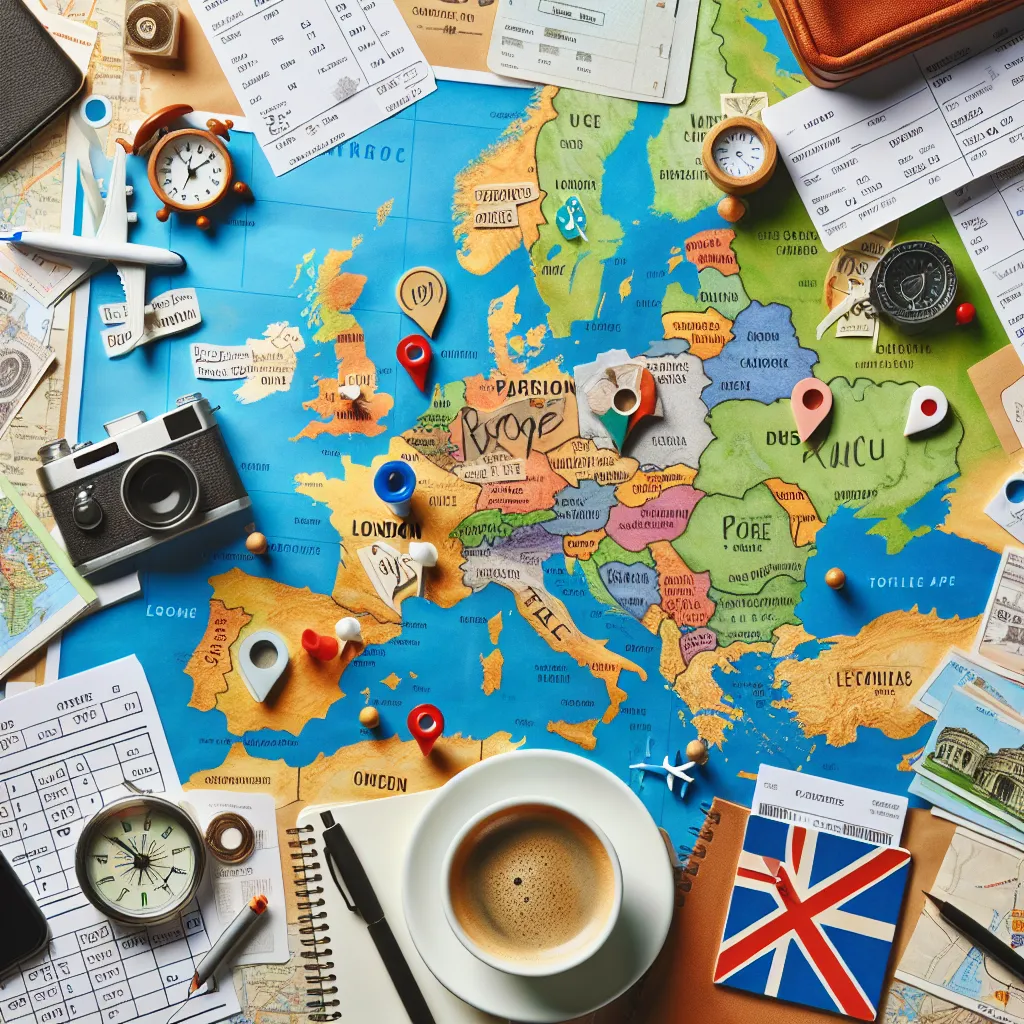Planning a trip to Europe can be an exciting yet daunting task. With so many countries, cultures, and cuisines to explore, where do you start?
This guide is here to help. It will walk you through the process of planning a trip to Europe, from setting a budget to choosing your destinations.
Whether you're planning a trip to Europe for 2 weeks or a longer adventure, this guide has you covered. It will provide practical tips on how to travel Europe cheap, without missing out on the experiences that make a European vacation unforgettable.
We'll also delve into the logistics of trip planning in Europe. This includes visa requirements, transportation, accommodation, and more.
So, whether you're a seasoned traveler or planning your first trip to Europe, let's embark on this journey together. Get ready to turn your European dream into a reality.
Step 1: Determine the Best Time to Visit
The timing of your visit to Europe can significantly influence your experience. Consider factors like weather, crowds, and costs. Each season offers its charm and challenges.
Here's how to decide when to go:
- Spring (March-May): Enjoy blooming landscapes and mild weather.
- Summer (June-August): Ideal for festivals but expect higher prices and bigger crowds.
- Autumn (September-November): A great time for fewer tourists and beautiful foliage.
- Winter (December-February): Perfect for winter sports and festive holiday markets.
Carefully planning your trip around these seasons can enhance your enjoyment and help keep your trip within budget.
Step 2: Set Your Budget
Creating a budget is crucial for a successful trip to Europe. It keeps your spending in check and helps prioritize activities. Start by estimating costs for each part of your trip.
Consider these key budget areas:
- Flights: Look for deals on multi-city tickets.
- Accommodation: Choose between hotels, hostels, or vacation rentals.
- Transportation: Factor in trains, buses, and local transport.
- Food and Dining: Allocate funds for restaurants and local eats.
- Attractions: Reserve some money for entrance fees and tours.
A well-thought-out budget ensures you have a stress-free and enjoyable experience. Don't forget to set aside some funds for unexpected expenses.
Step 3: Research Visa Requirements
Understanding visa requirements is vital when planning a trip to Europe. These rules can vary significantly between countries and nationalities. Check each destination's official government website for up-to-date information.
Also, ensure your passport has ample validity beyond your return date. Some countries require at least six months of validity. Applying for a visa well in advance can prevent last-minute issues. This preparation will help ensure smooth travels throughout your European adventure.
Step 4: Choose Your Destinations
Selecting the right destinations is crucial for an enjoyable trip to Europe. Consider your interests, whether it's history, art, nature, or food. Create a list of places you dream of visiting.
Next, research each destination's highlights and how they fit into your itinerary. Prioritize cities and landmarks based on proximity and ease of travel between them. This approach saves time and travel expenses.
Don't forget to factor in travel connections like flights, trains, or buses. Balancing must-see attractions with leisurely exploration often leads to the best experiences. For inspiration, consider adding a few of these destinations to your list:
- Paris, France
- Rome, Italy
- Barcelona, Spain
- Prague, Czech Republic
Step 5: Book Your Flights
Once your destinations are set, it's time to book your flights. Begin by comparing flight prices on various travel sites. Look for deals or discounts, especially if booking round-trip tickets or multi-city flights.
Consider flexible dates for cheaper options, as flying mid-week can be more affordable. Keep an eye on budget airlines offering competitive prices for European routes. Some key tips for booking flights include:
- Set alerts for price drops.
- Choose nearby airports for lower fares.
- Use loyalty points or miles for discounts.
By securing your flights early, you'll set a solid foundation for your European adventure.
Step 6: Explore Accommodation Options
Accommodation can significantly impact your travel experience, both in comfort and cost. Start by comparing different lodging options like hotels, hostels, and vacation rentals. Each offers unique benefits, fitting different budget levels and preferences.
Apps and websites can help you find deals tailored to your needs. Consider reading reviews to ensure quality. Remember that location plays a vital role in accessibility and cost-efficiency. Here are several lodging options to explore:
- Hotels for comfort and amenities.
- Hostels for budget-friendly choices.
- Vacation rentals for a local feel.
Choosing the right accommodation enriches your European journey, providing a cozy base for your adventures.
Step 7: Plan Your Transportation Within Europe
Navigating Europe's extensive transport network can seem overwhelming. Start by exploring options like trains, buses, and flights for moving between cities. Each transport mode offers unique benefits and costs.
Using rail passes like Eurail or Interrail can make train travel cost-effective. Additionally, public transport within cities, such as metros and trams, can save both time and money. Consider these modes of transport:
- Trains for scenic routes.
- Buses for budget-friendly travel.
- Domestic flights for quick long-distance trips.
Thoughtful transportation planning enhances your trip, ensuring efficiency and ease as you explore Europe.
Step 8: Consider Travel Insurance
Travel insurance provides peace of mind on your European adventure. It covers unexpected situations like trip cancellations, medical emergencies, or lost luggage. Investing in insurance can prevent unforeseen costs that disrupt your vacation.
Choose a policy that suits your trip's length and planned activities. Always read the terms to understand what's covered.
Step 9: Packing Tips and Essentials
Packing smart ensures a smooth trip without extra baggage fees. Opt for versatile clothing to adapt to different occasions. Remember to consider the weather and cultural norms of your destinations.
Here's a checklist to guide your packing:
- Comfortable walking shoes
- Weather-appropriate clothing and layers
- Travel-sized toiletries
- Chargers and adapters for electronics
- Important documents (passport, tickets, etc.)
- Medications and a basic first-aid kit
Efficient packing helps you stay organized and prepared. Keep a copy of your packing list to avoid leaving essentials behind.
Step 10: Local Customs and Practical Tips
Understanding local customs enriches your travel experience and builds positive interactions. Basic etiquette varies by country, so research cultural norms before you arrive. Showing respect for traditions can lead to more authentic connections with locals.
Practical tips can save time and money on your trip. Learn key phrases in the local language to ease communication. Simple greetings and polite expressions are often appreciated and can open doors. Navigating public transport, dining etiquette, and tipping customs are essential for a smoother trip.
Below are some practical tips for your journey:
- Familiarize yourself with public transport options
- Keep local currency on hand for small purchases
- Be aware of common tourist scams
- Carry a reusable water bottle
- Respect quiet zones and personal space
Embrace these tips to enhance your European adventure and create lasting memories. Stay open to learning and adapting, ensuring a fulfilling journey.
Conclusion: Embrace the Adventure
Planning a trip to Europe requires careful thought and preparation. Each step, from budgeting to exploring local customs, plays a crucial role in creating a memorable journey.
Remember, the spirit of travel lies in embracing the unknown and being open to new experiences. Enjoy every moment and treasure the adventures along the way.



